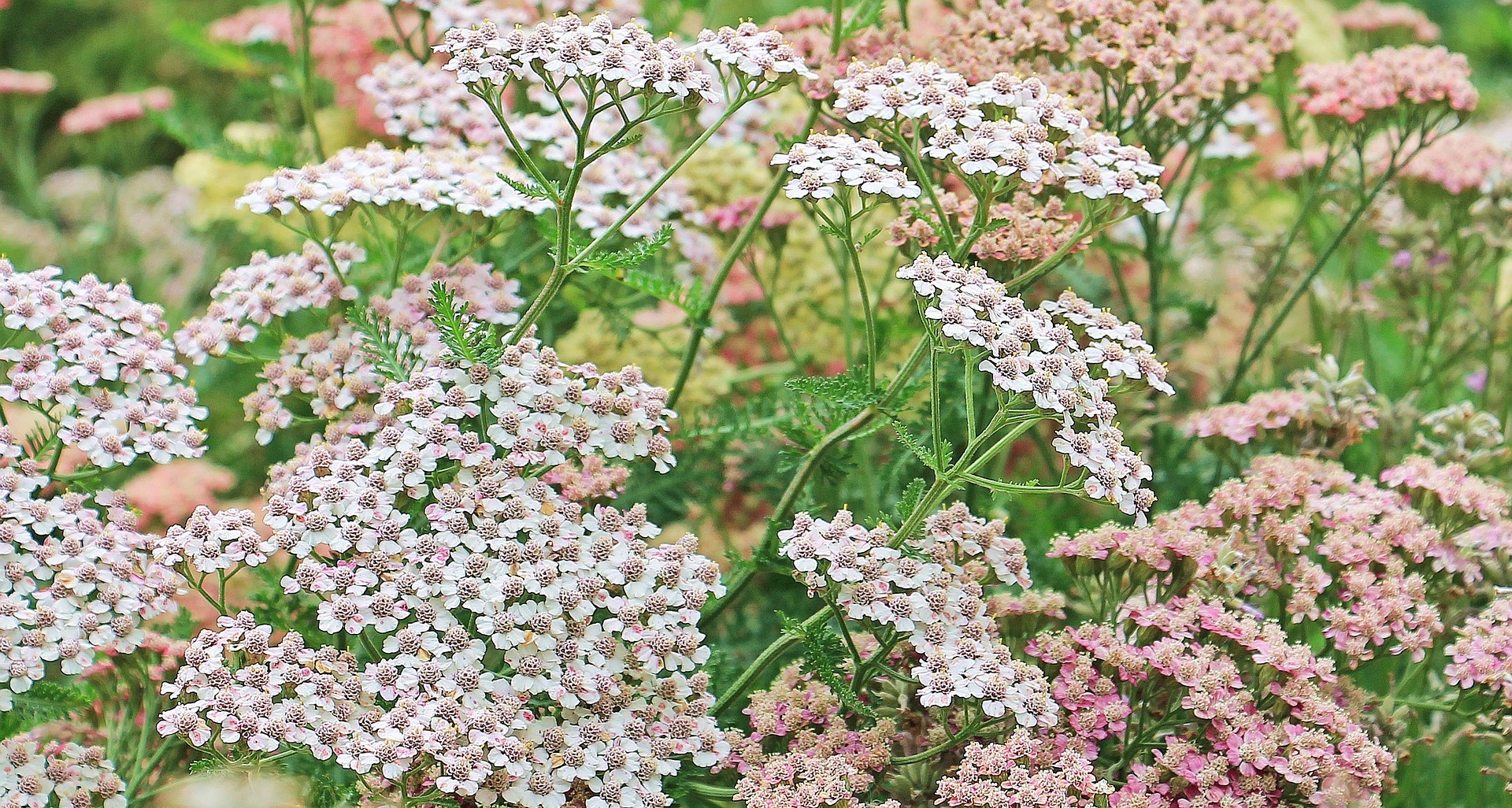Have you been thinking of starting your very own home garden this 2021? The year has encouraged us to think of new hobbies to start, and it brought the creativeness that’s sleeping deep within us.
There’s nothing to be scared of with being a beginner; gardening doesn’t have to be challenging. The critical information below will guide you through your journey of gardening. Read more about the flowers mentioned below to get you started on your home garden! The five flowers discussed below will make your home garden bright and beautiful.

Yarrow (Achillea millefolium)
The botanical name of yarrow is achillea millefolium. It is a hardy perennial yarrow plant. It has flowers that bloom during April through October; it has dome-shaped or flat-topped clusters of white, yellow, gold, and orange blooms. The yarrow plant can grow up to three feet tall. It has aromatic leaves that are fine and feathery-cut, which gives the yarrow a fern-like appearance.
Yarrow loves a well-draining soil and a dry and hot condition. Don’t overwater your plant since it cannot tolerate this. To properly care for the plant, mix a two to four-inch layer of compost by loosening the land using a tiller or garden fork for about 12 to 15 inches deep. When harvested, yarrow is usually used as a tea as it was linked in the past with alleviating digestive issues.
Click Here to know more about the Yarrow Plant! You don’t have to search high and low for a detailed explanation of the plant because Gardener’s Path did meticulous research for you. They aspire to help individuals who want to learn about the plant by placing what they’ve learned in an easy-to-understand article.

Strawflower (Xerochrysum bracteatum)
From spring up until autumn, you can bless your eyes with this annual plant that blooms either white, purple, red, purple, orange, pink, or golden yellow flower heads. It has small individual flowers that form into a large cluster that surrounds a sizable papery bract. Strawflower is famous for its papery bracts that look alike with a petal.
These flowers love being under the sun for at least six to eight hours a day; it also thrives in a potting mix or a well-draining soil. The plant can tolerate a location that’s part shaded, but if you want your plant to bloom well, place it under direct sun. Luckily, strawflowers are drought-tolerant, and they’re easy to get along with!
Strawflowers can reach up to 30 to 90 centimeters in height! Isn’t that amazing for a plant that’s easy to take care of? Interestingly, the name strawflower comes from the fact that its bracts’ texture is similar to a straw.

Rain Lily (Zephyranthes)
Rain lilies can also be called zephyranthes. It got its name because the plant usually blooms after it rains. Rain lilies’ flowers point upwards, and it has equal stamen, and its flowers are star-shaped.
Plant it where it gets afternoon shade, especially when you live in a hot area. Even when it’s dormant, regular watering is a must for the plant. Its soil has to be well-draining as well.

Yellow-Eyed Grass (Xyridaceae)
The leaves of the yellow-eyed grass are unique to its long and slender leaves with parallel veins! Resembling a cone is its stem in a spike, and atop of this are its flowers that bear pollen and ovule parts. Yellow-eyed grass’ flowers are actinomorphic, and this means that it’s radially symmetrical. The plant blooms in May up until June.
Feed your yellow-eyed grass during early spring every year. Do this by applying low-nitrogen fertilizer lightly. Additionally, water the plant regularly since it’s a wetland plant. Also, every two to three years, divide the plant during early spring when it’s the best time to do this. Interestingly, the yellow-eyed grass has over 250 species worldwide, and you have a wide array of options to choose from with a plant that best suits your location.

Golden Trumpet (Allamanda cathartica)
During summer through fall, golden trumpet produces flowers in the shade of, you’ve guessed it, golden yellow, and occasionally, it comes with white markings on its throat. These golden flowers consist of two to three centimeters of a long tube that flares into five petals with a span of 13 centimeters. Additionally, golden trumpets are produced in clusters.
When caring for the golden trumpet, never forget that it doesn’t like wet feet. So during spring through summer, fertilize it with good blooming food every two to three weeks. During winter, let it rest by suspending the provision of fertilizer.
Takeaway
Now that you have read about the five flowers’ facts, appearance, plant care, etc., mentioned above, you can now get started on your home garden! Handle your plants with love and be sure to follow the guide mentioned below, and go the extra mile and research more on the plants of your choice to ensure that they’ll grow healthy. They’ll give brightness to your life during bloom time.

